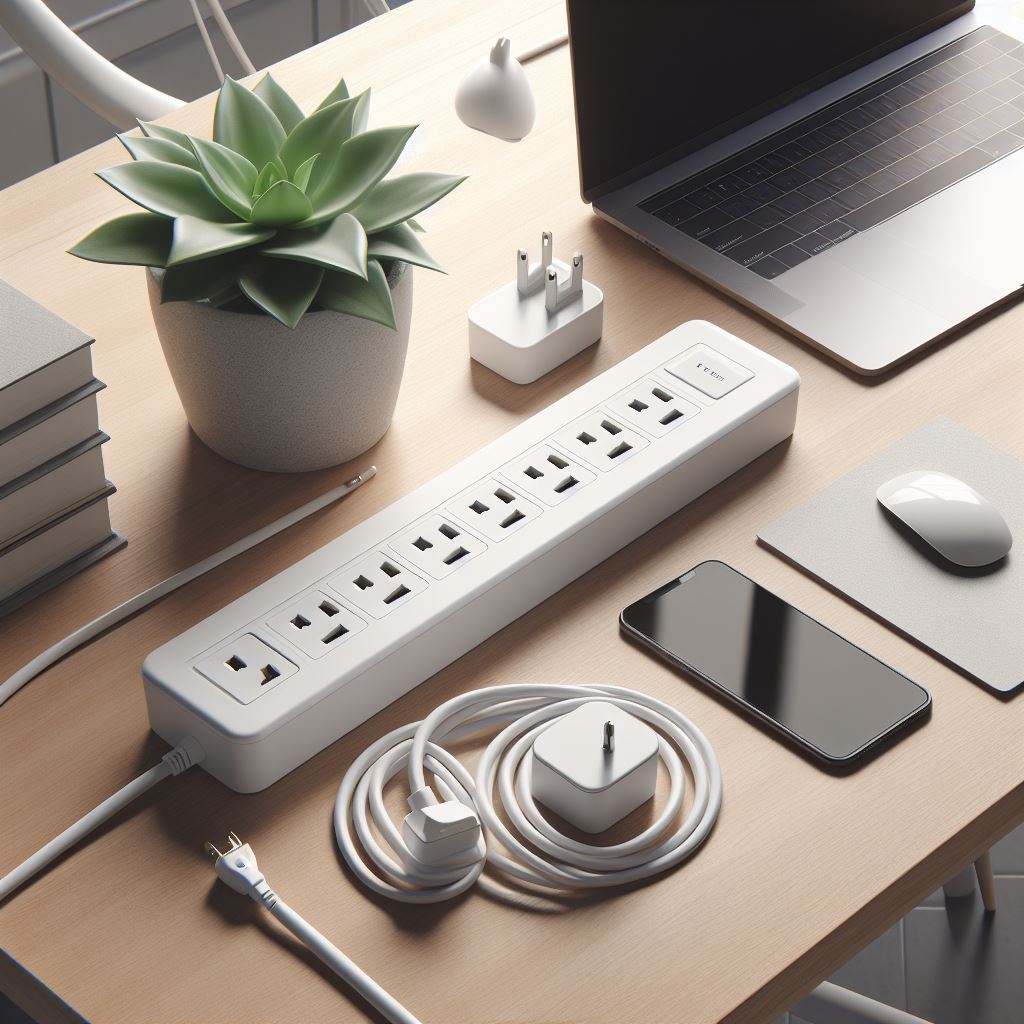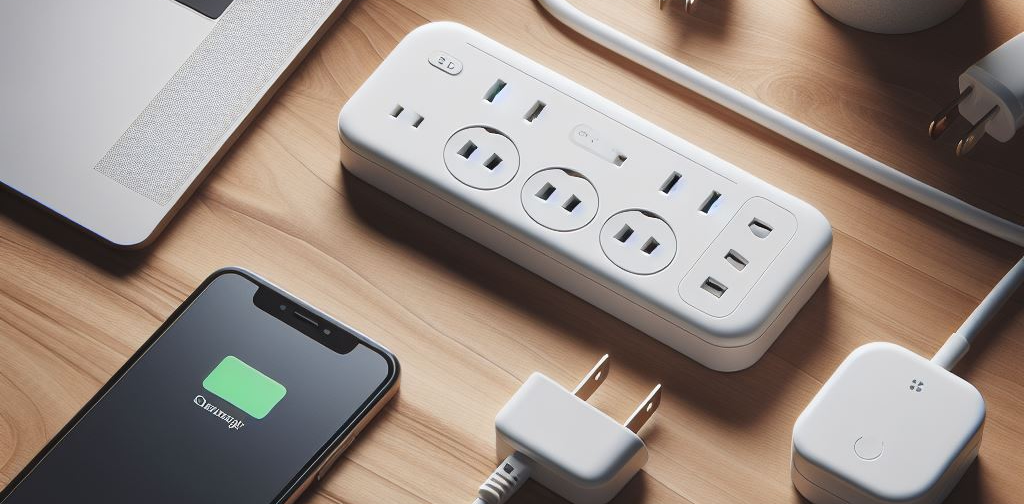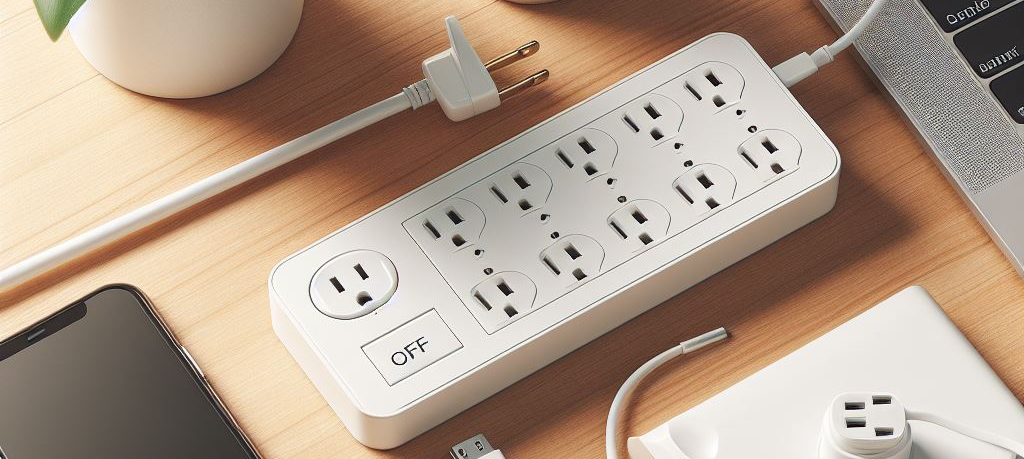The Role of MLCC in Power Strip

Multilayer Ceramic Capacitors (MLCCs) play a crucial role in the functionality and reliability of power strips. These small but mighty components serve several important functions within the power strip’s circuitry, enhancing its performance and safety. Here are some key roles that MLCCs play in power strips:

The Role of MLCCs in Power Strips
Filtering Electrical Noise: MLCC is used in power strips to filter out high-frequency electrical noise that can disrupt the operation of connected devices. By acting as filters, MLCCs help ensure that the power supplied to devices is clean and free from interference.
Stabilizing Voltage: MLCCs help stabilize the voltage supplied to connected devices, ensuring that they receive a consistent and reliable power supply. This is especially important in environments where voltage fluctuations are common.
Protecting Against Power Surges: MLCCs can also help protect connected devices from power surges and spikes. They can absorb excess energy during a surge, preventing it from reaching and damaging the devices.
Improving Power Efficiency: MLCCs can improve the power efficiency of a power strip by reducing the amount of energy lost as heat. This can lead to lower operating temperatures and potentially longer lifespan of the power strip.
Benefits of Using MLCCs in Power Strips
Multilayer Ceramic Capacitors (MLCCs) offer several key benefits when used in power strips, making them an essential component in the design of these devices. Here are some of the main advantages of using MLCCs in power strips:
Noise Suppression: MLCCs help to suppress high-frequency electrical noise in power strips, ensuring that connected devices receive clean and stable power. This can help to improve the performance and reliability of sensitive electronic equipment.
Voltage Regulation: MLCCs can help to regulate the voltage supplied to connected devices, ensuring that they receive a consistent and reliable power supply. This is particularly important in environments where voltage fluctuations are common.
Transient Voltage Protection: MLCCs can help to protect connected devices from transient voltage spikes and surges. They can absorb excess energy during a surge, preventing it from reaching and damaging the devices.
Compact Size: MLCCs are small and lightweight, making them ideal for use in compact electronic devices such as power strips. Their small size allows for greater flexibility in the design and layout of the power strip.
High Reliability: MLCCs are known for their high reliability and long lifespan, making them a dependable choice for use in power strips. They are resistant to temperature fluctuations and mechanical stress, ensuring consistent performance over time.
Cost-Effectiveness: Despite their high performance and reliability, MLCCs are relatively cost-effective compared to other types of capacitors. This makes them a cost-effective choice for use in power strips.
MLCC Specifications for Power Strips
When selecting Multilayer Ceramic Capacitors (MLCCs) for use in power strips, it’s important to consider several key specifications to ensure optimal performance and compatibility. Here are the main MLCC specifications to keep in mind for power strip applications:
Capacitance: The capacitance of an MLCC determines its ability to store and release electrical energy. For power strips, MLCCs with capacitance values typically range from a few nanofarads (nF) to several microfarads (µF), depending on the specific application and power requirements.
Voltage Rating: The voltage rating of an MLCC indicates the maximum voltage that the capacitor can safely withstand. It’s important to select MLCCs with voltage ratings that exceed the maximum expected voltage in the power strip to ensure reliable operation and safety.
Temperature Stability: MLCCs used in power strips should have a high temperature stability to withstand the heat generated during operation. MLCCs with X7R or X5R temperature coefficients are commonly used in power strip applications due to their stable performance over a wide temperature range.
Size and Package: MLCCs are available in various sizes and packages, so it’s important to select MLCCs that are suitable for the space constraints and layout of the power strip. Surface-mount MLCCs are often preferred for their compact size and ease of installation.
Dielectric Material: MLCCs are available with different dielectric materials, such as X7R, X5R, and C0G (NP0). The dielectric material affects the capacitance stability, temperature stability, and voltage characteristics of the MLCC, so it’s important to select the right dielectric material for the specific application requirements.
Voltage Coefficient: The voltage coefficient of an MLCC indicates how much the capacitance changes with applied voltage. MLCCs with a low voltage coefficient are preferred for power strip applications to ensure stable capacitance values under varying voltage conditions.

Design Considerations for MLCCs in Power Strips
Integrating Multilayer Ceramic Capacitors (MLCCs) into the design of power strips requires careful consideration of several factors to ensure optimal performance and reliability. Here are some key design considerations when using MLCCs in power strips:
Placement: MLCCs should be strategically placed within the power strip’s circuitry to minimize parasitic effects and optimize their performance. Placing MLCCs close to the power input and output terminals can help reduce noise and improve voltage regulation.
Routing: Proper routing of traces connecting MLCCs is essential to minimize parasitic effects and ensure reliable operation. Avoid sharp bends and long traces, as these can introduce impedance and reduce the effectiveness of the MLCCs.
Decoupling: MLCCs should be used for decoupling purposes to ensure stable power supply to sensitive components. Place MLCCs near high-current components, such as voltage regulators or microcontrollers, to reduce voltage fluctuations and improve stability.
Thermal Management: MLCCs can generate heat during operation, so it’s important to consider thermal management strategies to prevent overheating. Ensure that MLCCs are not placed near heat sources and provide adequate ventilation to dissipate heat.
Selection of MLCCs: Select MLCCs with appropriate capacitance, voltage rating, temperature stability, and package size for your power strip application. Consult the manufacturer’s datasheets and application notes for guidance on selecting the right MLCCs.
Testing and Validation: Before finalizing the design, test the power strip circuitry with MLCCs to ensure that they meet performance specifications and comply with safety standards. Perform reliability testing to ensure that MLCCs can withstand the expected operating conditions.
FAQs: Common Questions About MLCCs for Power Strips
As an essential component in the design of power strips, Multilayer Ceramic Capacitors (MLCCs) often raise questions regarding their selection, installation, and performance. Here are some common questions and answers about MLCCs for power strips:
What is the role of MLCCs in power strips?
MLCCs in power strips primarily serve to stabilize voltage, filter electrical noise, and protect connected devices from power surges.
How do I select the right MLCC for my power strip?
Consider the capacitance, voltage rating, temperature stability, and package size of the MLCC to ensure compatibility with your power strip’s design and requirements.
Can I reuse MLCCs from old or broken devices?
It’s not recommended to reuse MLCCs from old or broken devices, as their performance and reliability may have been compromised.
How do I know if an MLCC is defective or damaged?
Signs of a defective or damaged MLCC include visible cracks, bulging, or leaking. Additionally, if the power strip experiences issues such as voltage fluctuations or device malfunctions, it may indicate a faulty MLCC.
Can MLCCs improve the energy efficiency of power strips?
Yes, MLCCs can help improve energy efficiency by reducing electrical noise, stabilizing voltage, and protecting devices from power surges, which can lead to more efficient operation.
Are there any safety considerations when using MLCCs in power strips?
Yes, it’s important to ensure that MLCCs used in power strips meet safety standards and regulations to prevent electrical hazards. Consult the manufacturer’s specifications and guidelines for safety information.
How do I install MLCCs in a power strip?
MLCCs are typically surface-mounted components and should be soldered onto the power strip’s circuit board following the manufacturer’s recommended procedures.
Can MLCCs be replaced if they fail?
Yes, MLCCs can be replaced if they fail. However, it’s important to use replacement MLCCs that meet the same specifications as the original components to ensure compatibility and performance.
